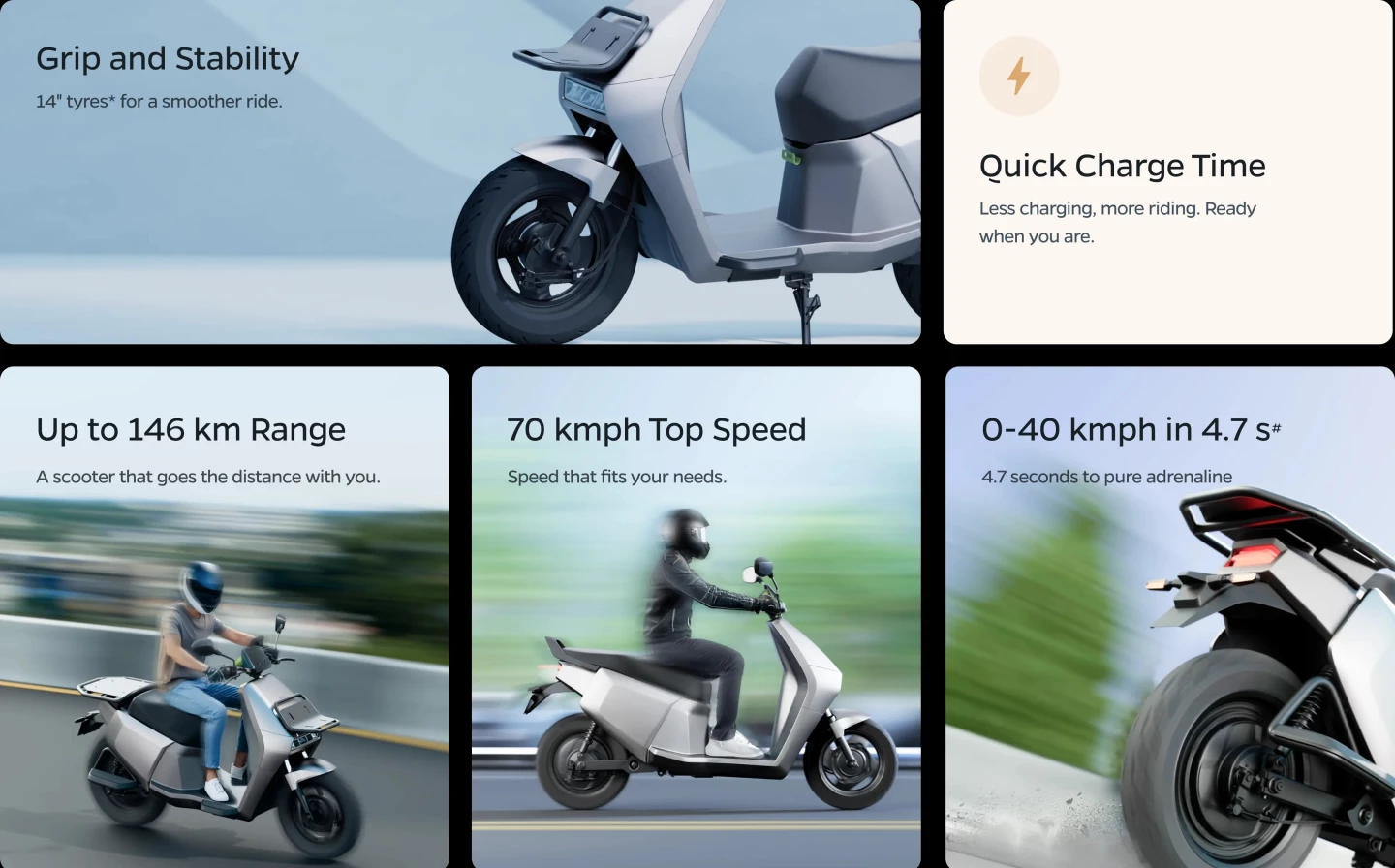Indian EV manufacturer Ola Electric has made another extraordinary announcement, launching a new range of radically cheap electric scooters, complete with swappable batteries, that'll set riders back a fraction of the cost of a typical ebike.
As the name suggests, the new range of e-scoots is designed specifically for India’s gig workers. It marks a major release in the commercial electric two-wheeler segment, thanks to a jaw-dropping set of price tags.
There are four new models – Ola Gig, Ola Gig+, Ola S1 Z, and Ola S1 Z+. The Gig models are specifically designed for commercial use and start at IN₹39,999 which converts to US$472. The S1 Z series builds on the brand’s original S1 models and is targeted at urban commuters, students, and seniors. These new models start at IN₹59,999, which translates to just over US$700.
“India’s gig economy will be 2x in the next few years with more than 10 million workers,” said Ola Electric Chief Executive Officer Bhavish Aggarwal n a social media post. "These workers unfortunately have to ride poor quality products at a much higher price." So it’s pretty clear why Ola has gone for such frugal pricing.
The Ola Gig comes with a removable 1.5-kWh battery offering a range of 70 miles (112 km) and a top speed of 15 mph (25 km/h). So while you won’t really be talking to the wind, you’ll certainly have more range than the likes of Zero’s recently revealed cheapest American electric dirt bikes.
There’s also a slightly more expensive Ola Gig+ which offers a greater range and payload capacity. For IN₹49,999 (US$590), it features a removable single or dual battery setup with a 50-mile (81 km) single-battery range and 97-mile (157 km) dual-battery range. It will also have a higher top speed of 28 mph (45 km/h).

Ola has put huge emphasis on modularity and user-centric design with these electric scooters. “Our scooters are engineered for reliability and ease of use. The removable battery feature adds flexibility, whether it’s for charging at home or powering home appliances using the new Ola PowerPod, which transforms the battery into a portable inverter,” noted Kripa Ananthan, head of design at Ola Electric.
The Ola S1 Z, on the other hand, features a dual 1.5-kWh swappable battery setup and offers a range of up to 90 miles (146 km). It can go as fast as 49 mph (70 km/h) and is powered by a 2.9-kW hub motor that helps it go from 0-25 mph in 4.8 seconds. Sure, it’s no Lightning LS218, but those are pretty decent figures for a passenger e-scooter.
Just like the Gig, there’s an upper trim, the S1 Z+ that’s priced at IN₹64,999 (~US$767). It shares the same performance specs, removable batteries, range, and top speed as the S1 Z, but adds a 14-inch LCD instrument console, as opposed to a 12-inch one, and thicker 14-inch wheels.

There’s not much information on the power figures just yet and it’s design wont really blow any skirts up. The newly-teased Honda EV Urban Concept might be up your alley if a striking design is what you’re looking for. But even that has its fair share of issues – poor range, fixed batteries and a considerably lengthy production time.
Ola Electric's website is already accepting reservations for all four variants in India. The Gig series will be the first to be delivered In April 2025, and in May 2025, the S1 Z series will start rolling out of the showroom floors.
It’s interesting to see how this pans out for Ola, considering the bikemaker was bashed left, right, and center with the launch of its electric motorcycles back in September. Thankfully, this time, it seems like Ola has kept away from copying someone else’s photo-op.

What remains to be seen is if the company holds good on its promise. For it wasn't too long ago when the global audience gasped and applauded when Ola’s electric motorcycles were first teased but come the time of the official launch, issues became more apparent than ever.
Additionally, Ola has something of a reputation for its poor customer service in its home country. Its scooters break down far too often, the service support is nothing to boast about and it’s too common to see the company surrounded by year-round controversies.
But for what it’s worth, these scooters could very well resurrect Ola’s ambition to become a global force. After all, even the cheapest proper Chinese e-motos don’t come in at $500. So, is the price the killer feature of these Ola e-scoots? When the rest of the package looks pretty underwhelming, it certainly looks like it.
Would the sub-$500 Ola Gig be on your wish list if it were to come to the USA?
Source: Ola Electric










